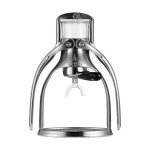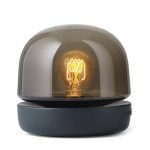Motherboard
Motherboards are the foundation of any computer system. They provide a platform for all other components to be connected and interact with each other, allowing the user to access and use their device. Without a motherboard, no computer would be able to function properly as it is responsible for connecting all parts together in order for them work harmoniously.
The main purpose of a motherboard is to connect multiple components such as RAM, CPU, GPU etc., which are essential pieces that enable your machine’s performance capabilities. It also provides power via connectors on its surface so that when you plug in an external device like keyboard or mouse they can receive power from your PC through the board itself without having additional cables going directly into them from your PSU (power supply unit). Additionally motherboards come with various ports such as USB 3/2/1 ports which allow users more flexibility when it comes down to expanding their systems by adding extra peripherals like printers or scanners etc..
Finally another important role motherboards play is providing support and compatibility between different types of hardware devices; this means if you want upgrade something inside your machine then most likely there will be compatible options available on market since manufacturers try make sure majority models have same design standards making easier people find what they need without worrying too much about compatibility issues coming up later down line after purchase has been made already – this saves time money effort!
What is the motherboard in a computer?
The motherboard in a computer is the main component that connects all of the other components together. It acts as a hub, connecting every single part of your computer and allowing them to communicate with each other. Without it, your computer would be nothing more than an expensive paperweight.
The motherboard is made up of multiple components including chipsets, sockets for processors and memory slots which allow you to add RAM or upgrade existing RAM if needed. The chipset also controls how data flows between different parts such as graphics cards or storage drives so they can work together efficiently without any conflicts occurring due to incompatible hardware connections and settings. Additionally, some motherboards feature built-in audio capabilities such as Realtek HD Audio Codecs which provide high-quality sound output while gaming or watching movies on your PC monitor instead of having separate speakers connected via cables at all times - this helps save space inside the case too!
Finally, modern motherboards come with extra features like USB 3 ports for faster data transfer speeds when using external devices like hard drives; Wi-Fi support so you don’t need Ethernet cords running around everywhere; HDMI ports for hooking up monitors/TVs directly into it rather than needing adapters; etcetera – making them incredibly versatile pieces that are essential in building any custom PC setup today! All these features combined make choosing the right one absolutely crucial before buying anything else since everything else will depend on what type/model you select first - otherwise compatibility issues could arise down the line leading to costly repairs later on (if possible).
How do motherboards work?
Motherboards are the main component of any computer system, providing a platform for all other components to connect and interact with each other. They provide an interface between the processor, memory, storage devices and peripherals such as printers or scanners. Motherboards come in many different sizes and configurations depending on their intended use; from small single-board computers to large server systems used in data centers. Despite their differences however, most motherboards share common features that allow them to function properly within a given system architecture.
At its core, a motherboard is essentially made up of two primary components: the chipset and printed circuit board (PCB). The chipset consists of several integrated circuits (ICs) which control various aspects of how information flows through the motherboard – from controlling bus speeds between different components or managing power delivery throughout your PC’s hardware subsystems. The PCB provides physical connections for these IC chips as well as slots where additional expansion cards can be added if needed – such as graphics cards or sound cards - allowing users to customize their systems according to specific needs without having to purchase completely new motherboards every time they want something upgraded/changed out .
Finally there are also connectors located around the edges which allow you plug things like USB ports into your machine so you can attach external devices like keyboards & mice etc., while some models may even include onboard Wi-Fi antennas allowing wireless connectivity directly onto your machine without needing additional adapters installed separately either via PCI slot or USB port . All this makes it possible for users have access wide range functions depending on what type device being built , whether it's home theater setup gaming rig etc.. In conclusion , understanding how motherboards work is essential anyone looking build own custom computer system since they form backbone entire operation!
How important is a motherboard?
The motherboard is one of the most important components of a computer. It serves as the central hub for all other hardware, allowing them to communicate and interact with each other. Without it, there would be no way for any device or software to work together in harmony. As such, having a high-quality motherboard is essential if you want your system to function properly and efficiently.
The motherboard contains many different parts that are necessary for computers to operate correctly including the CPU (Central Processing Unit), RAM (Random Access Memory), PCI slots (Peripheral Component Interconnect) , BIOS chips(Basic Input/Output System) , USB ports(Universal Serial Bus). All these components must work together in order for your system’s performance levels remain optimal at all times . A faulty or inadequate board can cause problems ranging from slow speeds and crashing programs right up through complete failure of key hardware elements like hard drives or graphics cards . Therefore selecting an appropriate mother board should not be taken lightly - it could mean success or failure depending on what kind of performance you need out of your PC setup .
Finally, when building a custom computer from scratch choosing quality over quantity will pay dividends down the road since cheap boards often lack features which may become critical later on during upgrades etc .. Investing in good quality componentry ensures that future expansion options won't be limited by poor design choices made at purchase time so always check reviews before making any decisions about buying new parts! Motherboards are essential pieces within our computing systems – they provide us with connectivity between our devices while also ensuring reliability throughout usage periods so make sure yours meets all requirements before taking home!





